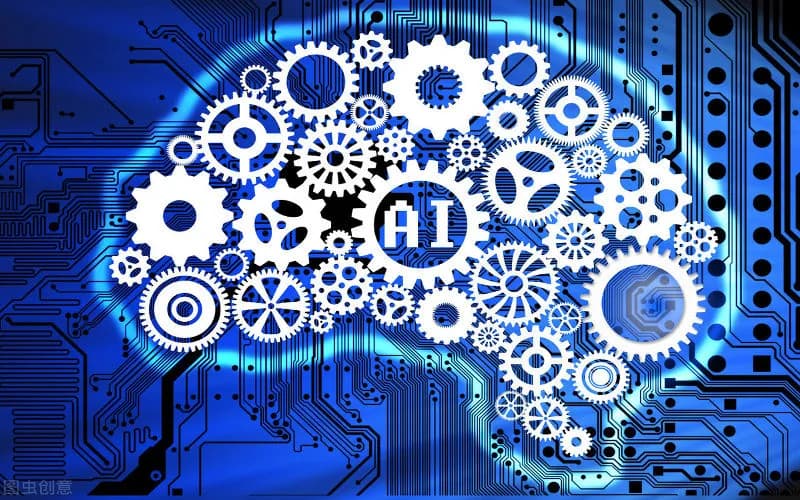Introduction
Most real-life datasets consist of both categorical as well as numerical columns. However, various Machine Learning models do not work with categorical data. So to fit this data into the machine learning model it needs to be converted into numerical data. For example, suppose a dataset has an Occupation column with categorical elements like Doctor and Engineer. These labels have no specific order of preference and also since the data is string labels. So machine learning models misinterpreted that there is some sort of hierarchy in them. To deal with this issue we will use the One Hot Encoding technique. One hot encoding is a technique that we use to represent categorical variables as numerical values in a machine learning model. However, multilabel categorical variables pose some challenges and determining which of the encoding methods to select defines a good model framework. This blog post describes the basic idea of multi-label one-hot encoding, reviews multiple encoding methods in Python, and gives code examples that can help readers implement them.
Overview of Categorical Data and Encoding Challenges
Why One-Hot Encoding is Important for Machine Learning
In machine learning, categorical data has to be converted so that the machine can understand it for training purposes. One-hot encoding encodes categories into binary numbers, this makes the algorithms treat these different values like unique numbers. The instruction of categorical data improves interpretability and accuracy while encoding them consistently improves the resultant model.
What is a Categorical Variable?
A categorical variable (or qualitative variable) is a variable that only takes a finite number of distinct values; these values are called modalities forms or categories. Some examples of categorical data are hair color (red, blonde, or black), political affiliation (republican, democrat, or other), and gender (male, female, or other). These are considered categorical because one is not more than the other.
Types of Categorical Variables:
- Single-Label: One item can be assigned to only one category (for example, the genre of a book).
- Multi-Label: A data point can be a member of more than one category (for instance, a book can be of more than one genre).
One-Hot Encoding with Multiple Labels
How Multi-Label Encoding Differs from Single-Label Encoding
Single and multi-label encoding are data preprocessing techniques that play diverse roles given their categorization under categorical data structure. Single label encoding maps one label to each measurement vector, giving a cleaner, lesser dimensionality representation. The second method, multi-level encoding, lets in many classes consistent with instances, so the binary matrix turns into more dimensional and complex. It needs more memory.
Benefits and Challenges of Multi-Label Encoding
- Benefits: Multi-label encoding offers better data representation, enhanced model interpretation, and greater model generalization.
Challenges: However, disadvantages exist such as increased dimensionality, overfitting, difficulties in training and evaluating a model, and limitations in memory and processing power. When several labels are encoded for one instance this means that encoding can be quite expensive.
Methods for Multi-Label One-Hot Encoding in Python
There are various techniques in Python, designed for multi-label one-hot encoding options. These techniques have their pros and cons for the type of data being used and the available memory.
Encoding Techniques
1. MultiLabelBinarizer from Scikit-Learn
Overview of MultiLabelBinarizer:
The MultiLabelBinarizer from Scikit-learn is an important utility for the binary class transformation of multi-label categorical data, preparing it for machine learning models. When dealing with multi-label data, each example may be associated with more than one category; thus, the MultiLabelBinarizer is a useful tool for encoding each category.
Example Code with Explanation:
Advantages and Limitations:
- Benefits: Easy to use, Quick to implement, and tailor-made for machine learning approach.
Drawbacks: This may cause sparsity and high storage constraints in instances of a large number of label set.
2. Manual One-Hot Encoding with Pandas
When to Use Manual Encoding:
The one-hot encoding technique is used to transform categorical variables into a binary (0-1) format. With the help of pandas, one can do manual one-hot encoding by creating dummy variables for all levels of a factor.
Example Code for Custom One-Hot Encoding:
Benefits of Customization and Flexibility:
Enables a fine-tuned approach, especially for handling specific label correlations or filtering specific categories.
3. Count Encoding
Count encoding is a pre-processing method that encodes each possible categorical value by a count of its occurrence in the data set. One advantage of this method is that it can enable the specifications of the frequency data of categories, which could prove useful for several algorithms in machine learning. Count encoding consists of replacing the categories of categorical features with their counts, which are estimated from the training set.
Code Example
Benefits and Drawbacks
Implementing count encoding is easy and maintains the order of the frequencies; however, it can also result in some variability in the data due to its low category counts and may not effectively model the relationship between the target variable and the categories.
4. Target Encoding
Target encoding is a method that replaces every unique value in the categorical feature with the mean value of a target variable. This method exploits the connection between the categorical feature and the target and can benefit the predictive characteristics of the feature in several cases, including most supervised learning tasks.
Code Example
Benefits and drawbacks
Target encoding can preserve categories-target variable dependencies and may lead to more accurate modeling. However, if you use small data sets or not properly regularized, it can lead to overfitting. Since it generates value bias.
5. CountVectorizer from Scikit-Learn
Use Scikit-Learn's CountVectorizer to create a multi-level encoded matrix for any text database. For each document (text sample), a column will be created for each word of the text corpus and its frequency in the document. Imagine a set of documents with some number of words in each, and we want to encode them by frequency. We treat each report as a level and its word count as the encoding vector. By default, Countvectorizer converts the text to lowercase and uses word-level tokenization.
Example Code Using Text/String Labels:
Best Practices and Potential Limitations:
CountVectorizer is useful when it is necessary to extract word frequencies in well-structured and clearly defined textual data, but it turns out to be insensitive to the context and, with a large vocabulary consisting of many less frequent words, it results in sparse and high-dimensional matrices.
6. Embedding Techniques (Advanced)
Embedding techniques provide a means of encoding high-dimensional categorical data into a lower-dimensional space while preserving the order and relations of its classes.
Techniques:
Word2Vec for Category Relationships: Word2Vec helps in capturing the degree of semantic similarity across categories.
Feature Hashing with FeatureHasher: It is a more memory-efficient approach that utilizes a hash function rather than an entire binary matrix.
Code Example with Word2Vec:
When and Why to Use Embeddings in High-Dimensional Datasets:
It is suitable for large datasets where reducing dimensionality and retaining relationship patterns are essential.
Encoding Strategy Selection Guide
There is nothing more important than the choice of the right encoding method in categorical data preprocessing, especially when multiple labels are involved. Thus, all forms of encodings are useful depending on the nature of the data, the type of model, or the project's constraints. This section should also serve as a quick reference guide to enable you to make the right choices.
Overview Table of Encoding Methods
| Encoding Method | Best For | Pros | Cons |
| MultiLabelBinarizer | Small to medium category sets | Easy, fast to implement, and ideal for use with ML. | Able to generate a structure matrix with HDL data |
| Manual One-Hot Encoding | Small datasets for which some changes are required | Customizable and flexible | Time-consuming for large category set |
| CountVectorizer | Text-based multi-label data | Easy for text data, automatic tokenization | Can create high dimensional matrices which are independent of context |
| Embeddings | high cardinality or categorically complicated data | They decrease the dimensionality, yet capture interactions. | More complex setup, suited for deep learning applications |
| Count Encoding | Low volume to moderately large volumes of data with high levels of dimensions. | Retains category frequency | Fails to retain specific category information |
| Target Encoding | Supervised learning tasks with categorical target | Sustain category-target dependency | May overfit if not regularized |
Final Thoughts
Choosing the appropriate encoding method for categorical data is important for creating effective machine-learning models. Different techniques such as One-Hot, Count, Target Encoding, and Embeddings each have their specific purposes, addressing aspects like model accuracy, memory efficiency, and interpretability. For small datasets, simpler options such as MultiLabelBinarizer are effective, whereas high-dimensional data gains advantages from using Embeddings. Count and Target encoding are useful for capturing important frequency and target relationships, but they might lead to overfitting if we don't use regularization. This guide helps you understand how to choose the right encoding strategy for multi-label data, which can improve your model's performance in Python projects.
FAQ
1. What is multi-label one-hot encoding, and when should I use it?
Multi-label one-hot encoding depicts data points that are associated with many categories; for instance, the genre of a particular film as comedy and drama. Apply it when one data point can have multiple labels in a dataset.
2. Is there any difference between the one-hot encoding of single-label and the one-hot encoding of multi-label data sets?
Single-label encoding assigns a single 1 per each category, while the multiple-label encoding assigns multiple 1 for each category.
3. Which of the encoding methods is suitable for large datasets?
For big data, it is recommended to use Embeddings, Count Encoding, or Sparse Matrix while managing memory and processing effectively.
4. What problems can occur when using multi-label one-hot encoding?
It results in increased dimensionality and consumption of memory particularly with many categories and may lead to over-fitting in some techniques such as the target encoding.
5. Which methods help to avoid overfitting while working with target encoding?
When using target encoding it is advisable to use other techniques such as smoothing or cross-validation to reduce overfitting.
6. What benefits do embeddings produce over one-hot encoding?
They are dense, memory efficient, and capture the relations between the categories as opposed to the one hot encoding which is sparse, and high dimensional.







